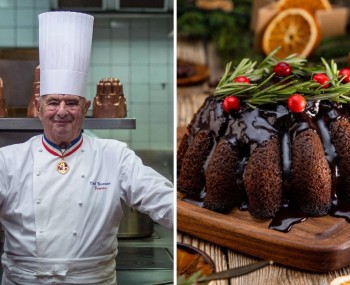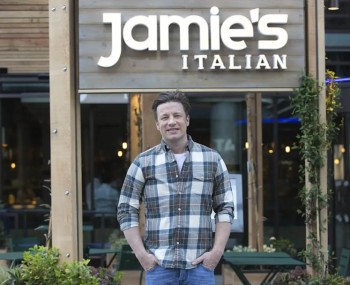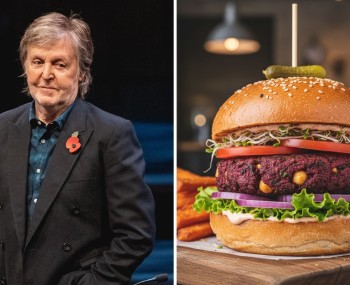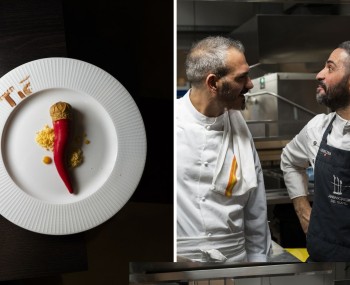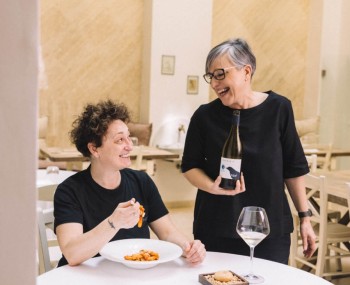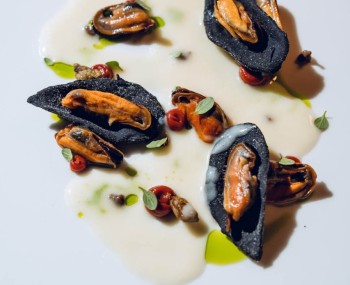“I have six restaurants: three are operating at a very low profit, two are almost breaking even, and one is losing a lot of money. It's a constant struggle between the dishes that come in and the money that moves to keep the business going.”
The news
Behind the soft lighting of Michelin-starred restaurants and the impeccable geometry of haute cuisine dishes, there is often a shaky mechanism of accounts that don't add up, juggling expenses and margins that are more bone-thin than golden. Tom Kerridge, a British chef beloved by TV and Michelin, knows this all too well. He has decided to speak candidly about how difficult it can be—even for someone of his caliber—to run a group of restaurants in today's restaurant scene.

In a candid conversation with The Guardian, Kerridge, 51, now a familiar face to the general public thanks to his appearances on shows such as MasterChef, Saturday Kitchen, and Food and Drink on BBC Two, confessed that at least half of his six businesses are barely covering their costs. “Three restaurants are operating at a very minimal profit, two are just breaking even, and one is losing a lot of money,” he explained. “It's a constant struggle, a balancing act between dishes coming in and money moving around to keep everything going.” This statement contrasts sharply with the glossy image of the successful chef, especially when you consider that The Hand & Flowers, the pub he has run with his wife Beth since 2005, was the first pub in the UK to receive two Michelin stars. His second restaurant, The Coach, has also been awarded a star. But behind the award-winning signs, everyday life is much more challenging.

Jamie May, head chef at The Hand & Flowers, added fuel to the fire with an eloquent comparison: “I prepare myself every day as if I were going to war.” A phrase that gives a sense of the daily instability experienced by a kitchen brigade, even in a top-level restaurant. The public may come, but that doesn't necessarily mean the books will balance. And this is not a reality limited to Kerridge's small world. Even Jeremy Clarkson, former face of Top Gear and now the unlikely owner of Farmer's Dog (a pub that opened in 2024), complained in The Times that “turning customer visits into profits is almost impossible.” The point is that today, the restaurant business—even the luxury one—has become a minefield: skyrocketing costs, inflation, staff shortages, and increasingly demanding customers who are often unwilling to understand what really goes into the price of a dish. Kerridge knows something about this: there was no shortage of controversy when he dared to offer fish and chips for £35 at Harrods, or an £87 entrecôte steak at his pub in Buckinghamshire.

But the chef has learned to take it in stride. “I've become immune to criticism,” he told Radio Times in 2023. “They see me as a man of the people, so when I put fish and chips on the menu for £35, they yell at me about the price. But my critics don't understand what goes into that price.” Behind it, for example, is a desire to offer the highest quality ingredients, continuous research, and the work of a large and skilled team. But there is also the need to face a market where even the most acclaimed restaurants are scraping the bottom of the barrel to stay afloat. After all, fish and chips is not just a dish for Kerridge: it is a symbol. "That dish was always considered fast food and cheap. I understand that, because that's where I come from," he said. But turning it into a gastronomic experience worthy of Harrods means rethinking it from top to bottom — and that comes at a cost. Kerridge's story, with its poignant admissions and food for thought, is an invitation to look beyond the golden surface of award-winning restaurants and shine a light on the backstage of an industry that is currently experiencing a structural crisis. Because if even the big names have to contend with tight budgets and daily survival strategies, it is clear that the “restaurant model” — as we knew it until a few years ago — is now under pressure.

Tom Kerridge's story is a breath of fresh air in a world that often limits itself to recounting triumphs and never stumbles. It is a necessary reminder for those approaching the world of restaurants with dreamy eyes, but also for those who sit down at the table without thinking about what happens behind that swinging door from which perfect dishes and exhausted chefs emerge. After all, even kings of the kitchen like Kerridge know that the restaurant business today is more like a circus act than ever before: you walk a tightrope, balancing costs, dreams, margins, and expectations. But when the lights go out in the dining room, all that remains is the muffled sound of your own fears, followed by the clatter of the dishwashers.

